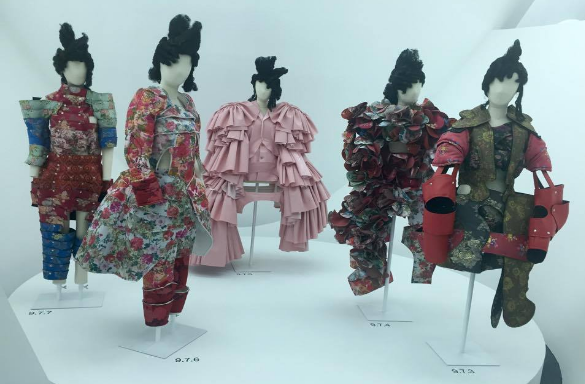Each of us has our own story of art — how we see and perceive art is entirely attributed to the pieces we’ve seen, the effect on us, and the connections we draw among them. This latter observation brings to mind the many art exhibitions currently offered in New York City, and the way in which they interconnect.
There is a distinct postmodern art movement, seeking to contradict aspects from late 19th to mid-20th century art, being referenced within these recent exhibits. I was fortunate enough to see The Arcades Project: Contemporary Art and Walter Benjamin, at the Jewish Museum in New York City. The Arcades Project began in 1927 as a short article about the newly instituted nineteenth-century iron-and-glass vaulted shopping passages in Paris, known as arcades. The article, considered to be German philosopher Walter Benjamin’s magnum opus, is the foundation for this contemporary art exhibit featuring contemporary artworks ranging from sculpture, painting, video, to photography. Benjamin expanded his project into an extensive study of Parisian society and the origins of consumer culture for over a decade. He left his work unfinished at the time of his suicide while fleeing from the Nazis in 1940, and The Arcades Project, which was published after his death, consists of Benjamin’s quotes, reflections, and notes on Paris, which he considered to be both the cultural and commercial capital of the world in the nineteenth century.
Upon first viewing this exhibit, I was blown away by the chaos of the first room I visited. It consisted of a topsy-turvy assemblage of hundreds of stuffed animals and doll collages, which produced a disorientating effect. It was as if I were peeking through a peephole into someone’s emotional unravelling. The disarray was instituted to represent nineteenth-century Europe, roiled by social unrest as shifts in politics and industry led to the growing power of the working class. In present-day America, similar injustices—relentless discrimination against minority groups and considerable imbalances in wealth—have recently triggered similar protest movements. Poet Kenneth Goldsmith annotated each artwork in the exhibition, extending Benjamin’s reflection on Paris as the capital of the nineteenth century into New York as the capital of the twentieth.
In a similar manner, Unfinished Conversations: New Work at the Museum of Modern Art brings together pieces by over a dozen artists, all of whom address current anxiety and unrest around the world through their work. The exhibition considers the intertwining themes of social upheaval, the influence of history on the shaping of identity, and art’s ability to collocate fact and fiction. The featured artists tackle contemporary power struggles by engaging in debates on labor exploitation and government surveillance.
Lastly, my visit to the Metropolitan Museum of Art to view the Rei Kawakubo/Comme des Garcons: Art of the In-Between exhibit upheld this concept of disruption in postmodern art and design. While observing the designs, I sensed feelings of uncertainty, hostility, and rage in each piece, giving me the feeling that I was being clued in on something relating to the current state of our world. Rei Kawakubo, who is considered to be one of the most revolutionary contemporary designers today, disrupted the fashion and art world through exploring unconventional subject matter and the tension between originality and mass production. She employs methods of destruction, disorder, and unconventional approaches to her design philosophy, and uses the color red to represent power, strength, and rebellion. Kawakubo also expresses disdain for conformity, using cages to symbolize being boxed in with no freedom of expression.
By experiencing these thought-provoking exhibitions firsthand, I was able to work out the interrelationship of the art exhibits described above. This interconnectedness between them is that they all explore social and political turmoil and disorder throughout history. Since all of these exhibits challenge civil, social, and political positions, and profess uncertainty regarding the future of our world, their simultaneous exhibition is no coincidence. This demonstration of history repeating could, and perhaps should, be read as a warning as to what the future could hold for the state of humanity.
Lara Baskin
staff writer
Graphics: Lara Baskin

